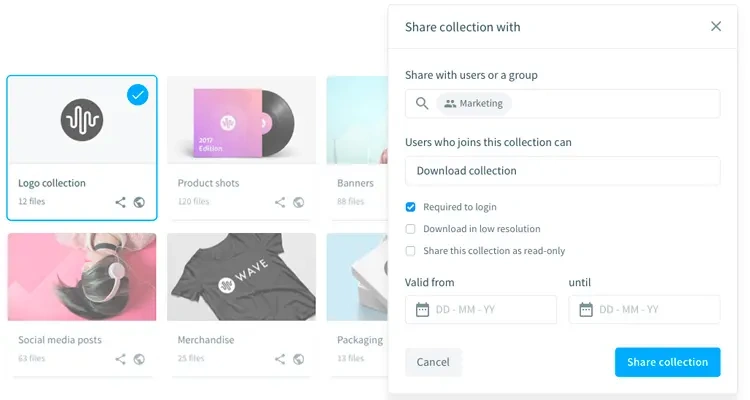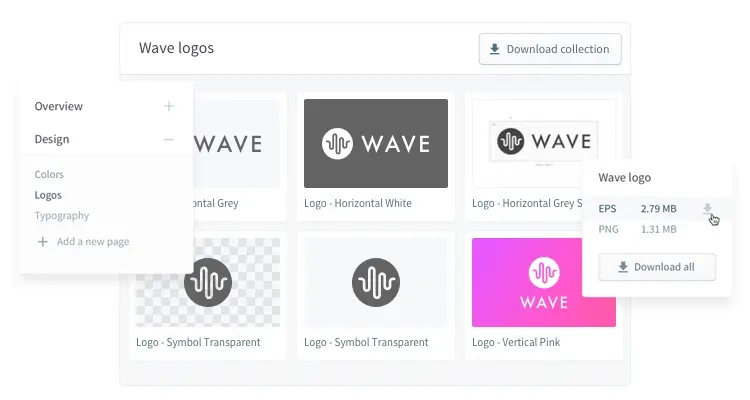Inc.com declared 2019 “The Year of the Rebrand” and we tend to agree. In the past few years, we’ve noticed an increasing trend of companies implementing digital asset management platforms to store, organize, and distribute the flood of digital assets created by a rebrand. Read on to learn why companies rebrand, the challenges they face during rebranding, and how DAM can help make sense of the mountain of digital assets created during the process.
The why behind the rebrand
Companies rebrand themselves for many reasons including when they offer new products or services, introduce newer technology to an established category, merge with another company(ies), shift focus from an established customer demographic to a new one, or simply to keep up with cultural design shifts and customer tastes. More than anything, when a company goes through a rebranding exercise, it’s an effort to adapt to changing forces in the marketplace and to differentiate themselves from their competitors. These companies know if they do not embrace change they will inevitably lose customer interest in favor of those companies that have embraced change.
When the thought of shaking up your brand surfaces at your company, branding guru David Brier has 19 questions you should ask and answer to keep your brand “true to itself, meaningful so people take notice and care, and powerful enough to make the difference everyone hopes for”
- Why are we doing a rebrand?
- What problem are we attempting to solve?
- Has there been a change in the competitive landscape that is impacting our growth potential?
- Has our customer profile changed?
- Are we pigeonholed as something that we (and our customers) have outgrown?
- Does our brand tell the wrong (or outdated) story?
- What do we want to convey? To whom?
- Why should anyone care about our brand?
- Have we isolated exactly who should care about our brand?
- Have their needs, or the way they define them, changed?
- Are we asking our customers to care more about our brand — and what it means — than we do?
- Is our brand associated with something that is no longer meaningful?
- Is our brand out of step with the current needs and desires of our customers?
- Are we leading with our brand direction?
- Are we following with our brand direction?
- Is the goal of this rebrand a stepping stone (evolutionary) or a milestone (revolutionary) ?
- Will this solution work in 5, 10 and 15 years from now based on what we can anticipate?
- Have we assigned some committee to manage the project versus someone (or at most, two people) who is/are focused, inspired and can lead?
- If we were starting our business today, would this be the brand solution we would come up with?

Challenges of a rebrand
So, you’ve addressed the 19 questions, decided that rebranding is in your future, and you’ve hatched a comprehensive implementation plan. You’re really doing this and whether you have an internal design team or hire an agency to execute all the deliverables, what you will have staring you in the face is a mountain of digital assets. If your company is merging with another during this process then you’ll have even more assets to manage (the two old and one newly created). Understanding the scale and scope of your rebrand is the first challenge.
Measurement matters
The second rebranding challenge is setting realistic expectations and deciding how you will measure the performance of the rebrand. What do you hope to achieve and how will you be able to see the needle move? Do you want more website visits? More inbound sales inquiries? Increased sales? Increased customer retention? All of it? Figuring out how to measure the return on investment (ROI) of your rebrand is essential before you unveil your new logo, and more, to the world.

Customers count
The third rebranding challenge to tackle is finding out what your customers think of your current brand before you go rushing off to change anything. Many times a rebrand stems from internal forces like a shift in management or a new mission or vision. Sometimes sales are sluggish and that makes people antsy to try something radical with the brand. And other times brands may feel pressured to undergo a rebrand because their competitors have undergone a rebrand.
But resist the temptation of a rebrand until you learn how people perceive your current brand. You might be surprised, in a good way. Or you might shudder to find out how poorly your brand is perceived in today’s crowded marketplace.
Employees know best
The fourth challenge with rebranding is understanding how your brand is perceived internally. Ask your employees what they think of your current brand. What works? What doesn’t? What do your employees on the front lines, who interact with customers day to day, hear from customers? Sometimes the best rebranding ideas come from unexpected places in the company. Ask whoever works your reception desk or sits in the accounting office what they think. It’s not always marketing that has the best rebranding ideas.
Above all, keep it small
The fifth challenge with rebranding deals with rebranding by committee. Instead, choose a small group of essential employees who will create a brief that will guide the process and set expectations as the process moves forward. Listening to every voice in the company when deliverables are being chosen is a recipe for disaster. Keep the rebranding committee small and agile so decisions can be made quickly and the process doesn’t lag in rounds of feedback and revisions.
What elements are involved in a rebrand?
Sometimes a rebrand is simply a new logo. But more often than not, a rebrand is a complete overhaul of how a company wants to be perceived in the marketplace. Beyond just the logo, elements that can be included under the umbrella of a rebrand are company tone and voice, the tagline, package design, photo and video styling, UI and UX on websites and apps, retail décor, signage, planograms, color pallet, fonts, social media icons, online content, advertising, and collateral. Depending on the size of the company and budget a “rebrand” can include a few of these elements or the whole lot.

Your shiny new brand assets need a home
When the end of your rebranding process is near, all your beautiful new logos, website pages, product photos, and designs for every possible marketing vehicle rolling off the press—you will end up with lots and lots of digital files. What to do with all those files? People in your company will need access to them. Outside vendors will need them as well. If you operate in more than one office or if you have franchisees, how will you efficiently give them access to the new brand assets? How will you maintain consistency when utilizing new design, logo, and photo assets? What if something can only be used for a limited time? What if some divisions of the company shouldn’t have access to the entire library of new assets? These are just a few, of many, questions you will be confronted with and thankfully there is one answer for almost all of them—digital asset management.
DAM to the rebranding rescue
Digital asset management or DAM is a single source of truth for your digital assets. DAMs can come in many forms and feature sets. Many are SaaS (Software as a Service) platforms where assets are uploaded to the cloud for storage, organization, and distribution. Some have simple folder structures, but more sophisticated solutions like Bynder are based on metadata tagging. This more evolved way of organizing files is based on tagging assets with keywords and other details that are attributed to that file. When anyone needs to find a specific file, all that’s needed to do is type in a few keywords that describe the asset and like magic, the asset is quickly accessed. But, sometimes you only want certain people to access to certain assets and sometimes for only a limited amount of time. Therefore, some DAMs have restrictions that can be placed on any asset such as permissions and expiration dates.

Storing, organizing, and distributing assets are the core functions of a DAM but some like Bynder go further with features like Brand Guidelines which give everyone a definitive picture of what the new brand looks like and how to create and use new assets. Another Bynder module is Asset Workflow which helps move creative jobs through the office from start to finish. Finally, Bynder also includes a Brand Templates module for creating iterative assets quickly, and the Bynder Analytics module to see how the assets in your DAM are being utilized and by whom.
Take a tour of Bynder today
Rebranding is not for the faint of heart and should not be undertaken lightly, but if your company has decided that a rebrand is in your future, make sure you include a DAM as part of your roadmap. King's Hawaiian bakery recently went through a rebrand and selected Bynder as a foundational part of their tech stack. Find out how Bynder can help your company manage the copious amount of assets created during a rebrand with a one-on-one demo of our top-rated, cloud-based, DAM solution.









